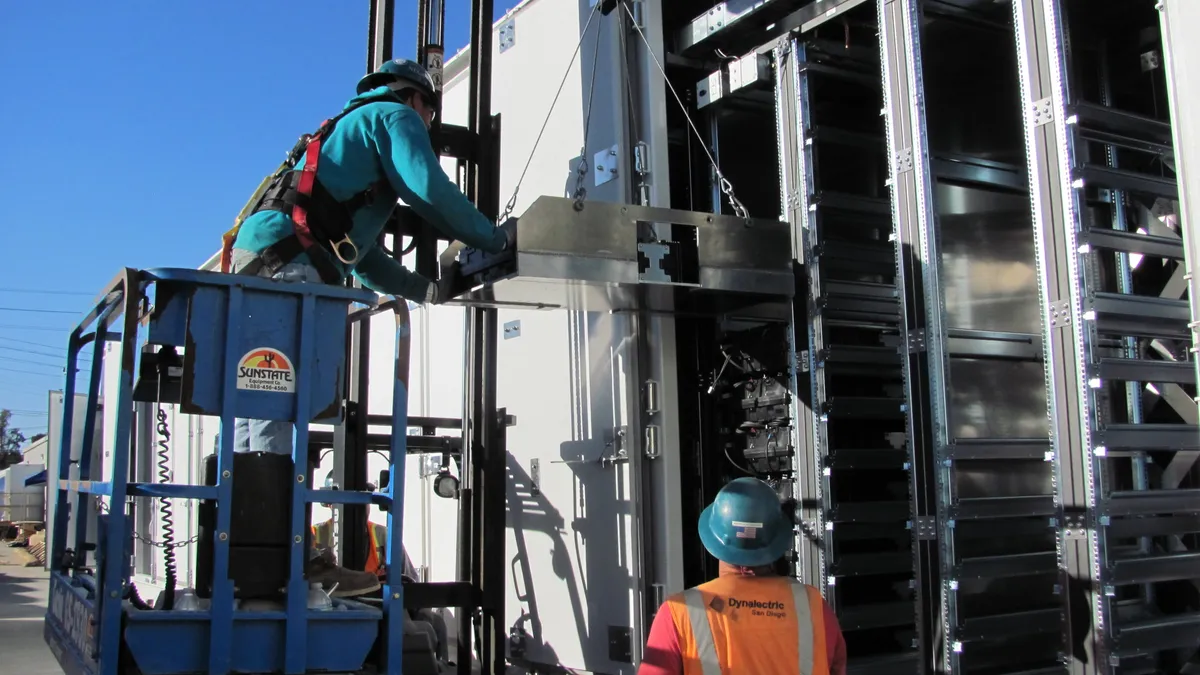Dive Brief:
-
Arizona's Salt River Project (SRP) power company has launched the state's first stand-alone battery storage project to provide flexible peaking capacity. SRP's stakeholders already approved the 20-year agreement underlying the project.
-
To learn more about grid-scale battery storage ahead of larger-scale possible deployments, the company made a power purchase agreement with AES. AES will operate a 10 MW, standalone four-hour battery purchased from Fluence Energy, housed in a building constructed by Mortenson.
- SRP's efforts come as the Arizona Corporation Commission is considering state energy storage goals. Commissioner Andy Tobin has proposed a "Clean Peak Standard," to site 80% of their electricity from renewables and nuclear by 2050, in addition to an energy storage deployment goal of 3 GW by 2030.
Dive Insight:
SRP is the largest provider of power in the greater Phoenix area, with more than 1 million customers throughout central Arizona. The community-based power utility has been grappling with how to integrate renewable energy into its grid. It levied demand charges at the end of 2014 onto its solar customers that caused residential installations to plummet.
SolarCity, now a Tesla subsidiary, sued SRP in 2015 as the added $50/month to solar customers hurt its rooftop solar value proposition. The two reached an agreement in March. The broad terms of the settlement involve a demand charge pilot and an incentive program rewarding SRP customers for installing storage, but the utility's demand charge would remain in place.
SRP would also buy a 25 MW battery from Tesla, to install at its Agua Fria Generating Station in Glendale, Ariz. SRP's 10 MW battery purchase from Fluence, a joint venture between AES Energy Storage and Siemens announced last July, will be built in Chandler, Ariz.
Fluence hopes this utility storage project will lead SRP to consider modular increases as it identifies more peaking needs, Kate McGinnis, market director for western U.S. at Fluence, told Utility Dive.
"That's one of the beauties of storage, that it's very scalable in need," McGinnis said, whereas other energy infrastructure might require estimates for your power needs 10 years from now.
McGinnis added that many gas peakers often have very low dispatch profiles, and those units "could wind up as stranded assets," with difficulty recovering their costs, as renewable energy grows. Utility storage would reduce the need for back-up thermal generation for renewable resources in SRP's service region.
Fluence has tracked a growing trend among utilities that are evaluating storage options, particularly when prompted by state regulators. The energy storage company has three additional projects on Arizona Public Service's distribution grid, in areas with high solar penetration.
"Ideally, all utilities everywhere will evaluate storage fairly against other alternatives to meet a particular need," McGinnis said.
CORRECTION: A previous version of this story misidentified the purchasing party of the Fluence 10 MW battery. AES is purchasing the battery. A previous version of this story misidentified two separate ACC energy proposals and the SRP project's presence in the state. It is Arizona's first standalone storage for flexible peaking capacity.















